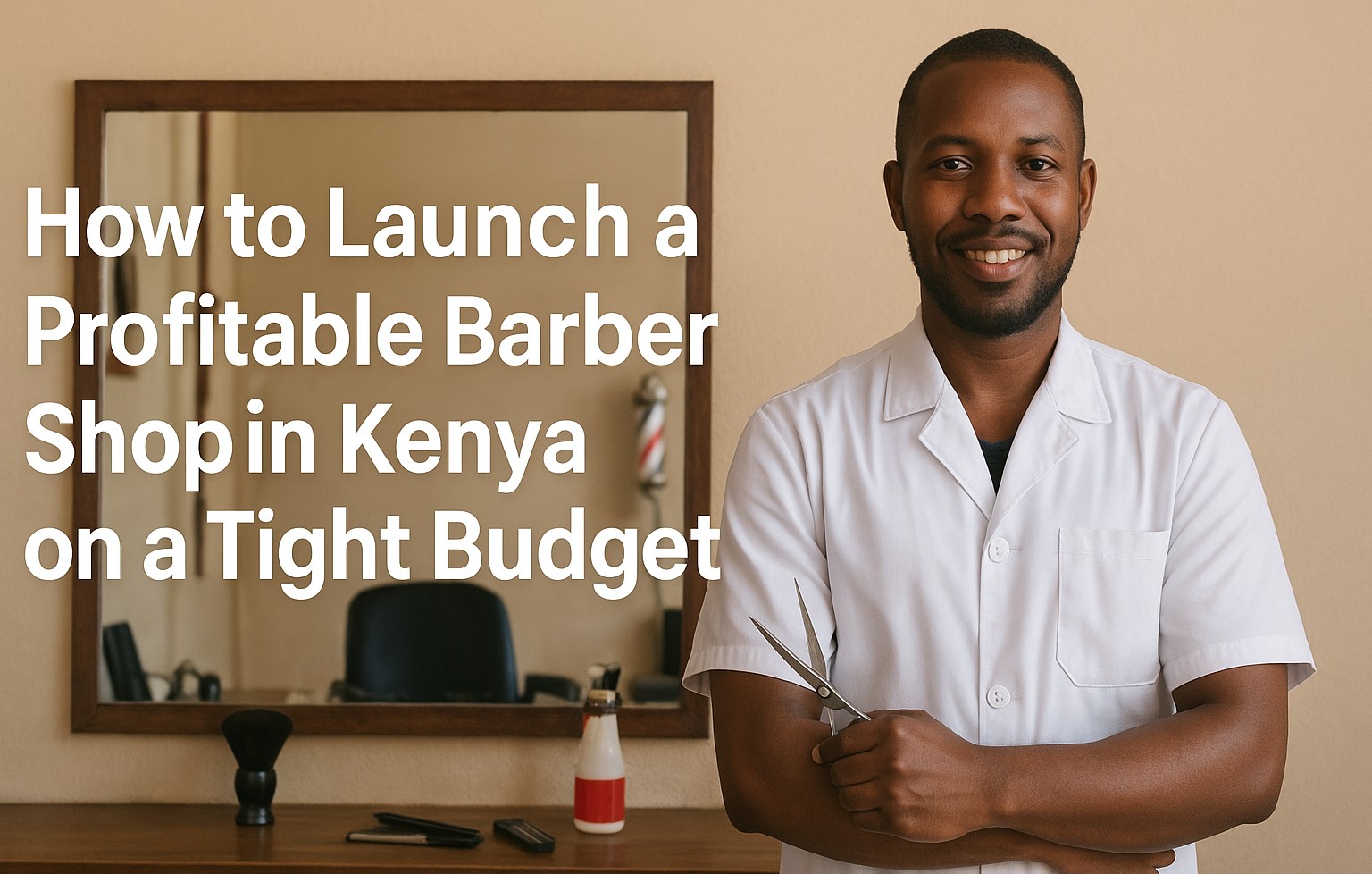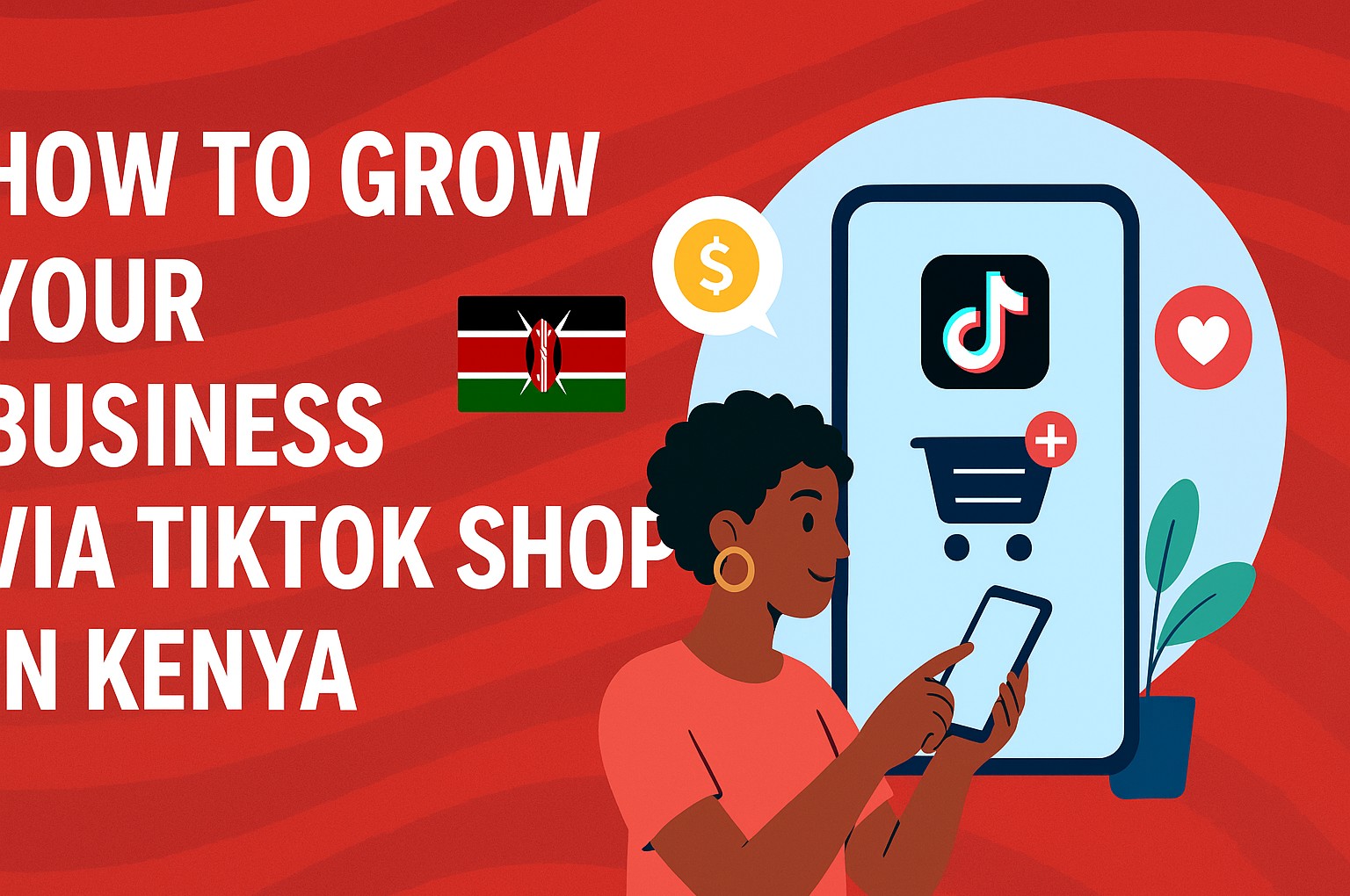

Titus Morebu
Author
How to Launch a Profitable Barber Shop in Kenya on a Tight Budget ✂️
Learn how to start a barber shop in Kenya with minimal capital: step-by-step guide on licensing, equipment, marketing, and growth strategies for 2025.
How to Launch a Profitable Barber Shop in Kenya on a Tight Budget ✂️
Dreaming of owning a barber shop (kinyozi) in Kenya without draining your savings? You can start small, grow smart, and build a loyal clientele—even with limited capital. This guide walks you through realistic steps, 2025-era costs, legal compliance, and growth hacks to help your barber shop thrive.
Why a Barber Shop Business Makes Sense
Grooming is an evergreen need. Whether in rural towns or city suburbs, people will always need haircuts, beard trims, head-shaves, and personal care. With relatively low overhead, a barber shop offers one of the more accessible service businesses to launch. Plus, once clients trust your work, word-of-mouth and repeat business fuel growth.
Profit Potential: Urban vs Rural
- In rural areas, you can often start with as little as KSh 20,000 and still serve price-sensitive clients.
- In towns or suburbs, you might invest KSh 100,000+ for a more stylish look, but you can charge higher rates.
Step 1: Planning & Market Research
Define your target market
Decide whether you’ll serve local residents, students, office workers, barbershop walk-ins, or a mix. Research competing kinyozis in your area: their prices, services, quality, and gaps. Ask people what they would like improved.
Prepare a lean business plan
Your plan doesn’t need to be 50 pages. At minimum, include:
- Startup budget & monthly operating costs
- Service menu and pricing
- Expected client volume and revenue forecast
- Marketing & customer acquisition plan
- Growth milestones (e.g. adding staff, new services)
Step 2: Legal Setup & Licensing (with Minimal Spend)
Register your business name or company
Start as a sole proprietorship or business name if capital is low. Kenya’s Business Registration Service enables you to reserve and register a name online. A full company setup can wait until revenue grows.
Obtain a Single Business Permit / Unified Permit
Every county issues a business permit (also known as a single business permit or unified business permit). The cost depends on location and size. Make sure your shop meets hygiene, signage, and safety rules.
Health, fire & safety clearances
Your barber shop is a personal care business — you’ll need a health certificate (inspection by county health officer) and fire safety clearance (fire extinguisher, escape routes). Comply early to avoid closure risk.
Tax registration (KRA / PIN / TIN)
Register for a KRA PIN or TIN if necessary. Even small businesses must comply with tax laws. As you grow, consider VAT and whether to register for it.
Step 3: Location & Setup on a Budget
Choose a strategic location
Go for visibility, foot traffic, and accessibility—not necessarily high rent. Near schools, bus stops, markets, or along busy roads are ideal. Starting with a small stall or kiosk is fine; you can upgrade later.
Essential equipment and furnishings
Start with only what’s necessary. Here’s a lean list:
- One barber chair (or second-hand) + mirror
- Clipper set and blades
- Scissors, combs, razors
- Sink, basin, buckets for washing
- Towels, aprons, capes, disinfectants
- Lighting, power extensions, basic electricals
- A waiting stool or chairs
Buy locally or source used/affordable gear (but ensure good condition). Avoid flashy decor until profits justify it.
Step 4: Staffing & Skill Strategy
Do it yourself initially
If you can cut hair yourself, you can delay hiring. This reduces payroll pressure and gives you control over service quality.
Hire subcontract or commission barbers
When demand rises, bring in barbers on commission or profit-share. This limits fixed salary burden while rewarding performance.
Continuous training & quality control
Hold mini skill sessions, ensure consistent service standards, and create a “signature style” so clients come back for your identity.
Step 5: Marketing That Doesn’t Break the Bank
Leverage social media & WhatsApp
Post haircut photos, before/afters, promotions, and video clips. Encourage clients to tag you. Use WhatsApp status to share bookings and offers.
Neighborhood outreach & flyers
Distribute flyers in nearby homes, offices, and shops. Offer “first cut free for a friend” or referral discounts to build awareness.
Collaborations & cross-promotion
Partner with salons, barbers in dorms, gyms, or shops near you to refer clients when full. You help them too.
Online presence & directory listing
Create a Google Business Profile so people can find you, leave reviews, and get directions. Even a simple Instagram or Facebook page helps. (This drives SEO too.)
Step 6: Managing Operations & Finances
Track daily revenue & expenses
Use spreadsheets, an app, or bookkeeping software to record daily haircut sales, product sales, utilities, rent, etc. Monitor profit margins weekly.
Reinvest profits wisely
Don’t withdraw everything. Reinvest into new tools, a second chair, decor, or staff training. Aim to scale gradually.
Offer additional services & retail products
Once stable, expand offerings: beard trims, scalp massages, hair wash, hair care products, shaving kits, grooming oils, etc. Retail margin is higher than service margin.
Step 7: Scaling Up Without Losing Your Core
Open additional bays or branches
When one shop is stable, duplicate the model in another location. Use the same branding, systems, and staff training.
Standard procedures & brand consistency
Create manuals: cleanliness standards, client greeting, haircut techniques, pricing, hygiene protocols. This ensures uniformity across branches.
Offer loyalty programs & packages
Introduce subscription or package deals (e.g. “10 cuts for KSh X”) to retain clients.
Key Risks & How to Mitigate Them
- Regulatory non-compliance: Stay updated with county rules; renew permits on time.
- Poor hygiene practices: Always sterilize tools—client trust is fragile.
- Cash flow crunch: Maintain a buffer, avoid overpaying for nonessentials early.
- Inconsistent quality: Always deliver your signature standard; don’t let staff slack.
- Competition: Stay innovative, offer extras, stay engaged with clients.
Estimated Startup & Running Costs (2025-era, Sample)
| Item | Low-budget estimate (KSh) |
|---|---|
| Barber chair + mirror | 8,000 – 15,000 |
| Clipper set & blades | 2,000 – 5,000 |
| Scissors, combs, razors, towels | 2,000 – 4,000 |
| Sink, basin, plumbing | 3,000 – 8,000 |
| Lighting, electrical works | 1,000 – 3,000 |
| Health & fire permit | 1,000 – 5,000+ |
| Business permit | 5,000 – 20,000 (varies by county) |
| Rent (first month + deposit) | 4,000 – 20,000+ |
So you can realistically start with KSh 20,000– 50,000 in a small town, or KSh 80,000– 200,000+ in a busier urban setup.
Success Tips & Final Thoughts
- Focus more on **service excellence** than flashy looks early on.
- Maintain impeccable hygiene—clients notice and speak about it.
- Solicit feedback and adapt (e.g. new styles, faster service).
- Treat clients warmly, create community, remember names.
- Track metrics: number of clients, upsell rate, retention rate.
- Scale only when one unit is stable—avoid overextending.
Starting a barber shop in Kenya with low capital is entirely achievable. With smart planning, legal compliance, lean setup, and focused execution, you can build a stable, scalable, and profitable grooming business. Your hands are your greatest assets—use them wisely. 💈
Gallery

Related Articles
3 articles
How to Become a Supplier to Supermarkets in Kenya – A Step-by-Step Guide 🌟
Learn how to register, pitch, and win supply contracts with Kenyan supermarkets. Step-by-step process, tips, and legal requirements — your roadmap to success.

Best Money-Saving Strategies for Kenyan Small Business Owners
Practical and actionable tips for small business owners in Kenya to cut costs, boost profits, and build resilience in 2025.

How to Grow Your Business via TikTok Shop in Kenya 🚀
Unlock TikTok Shop Kenya strategies to boost sales, visibility and customer trust with proven tactics for 2025 success.